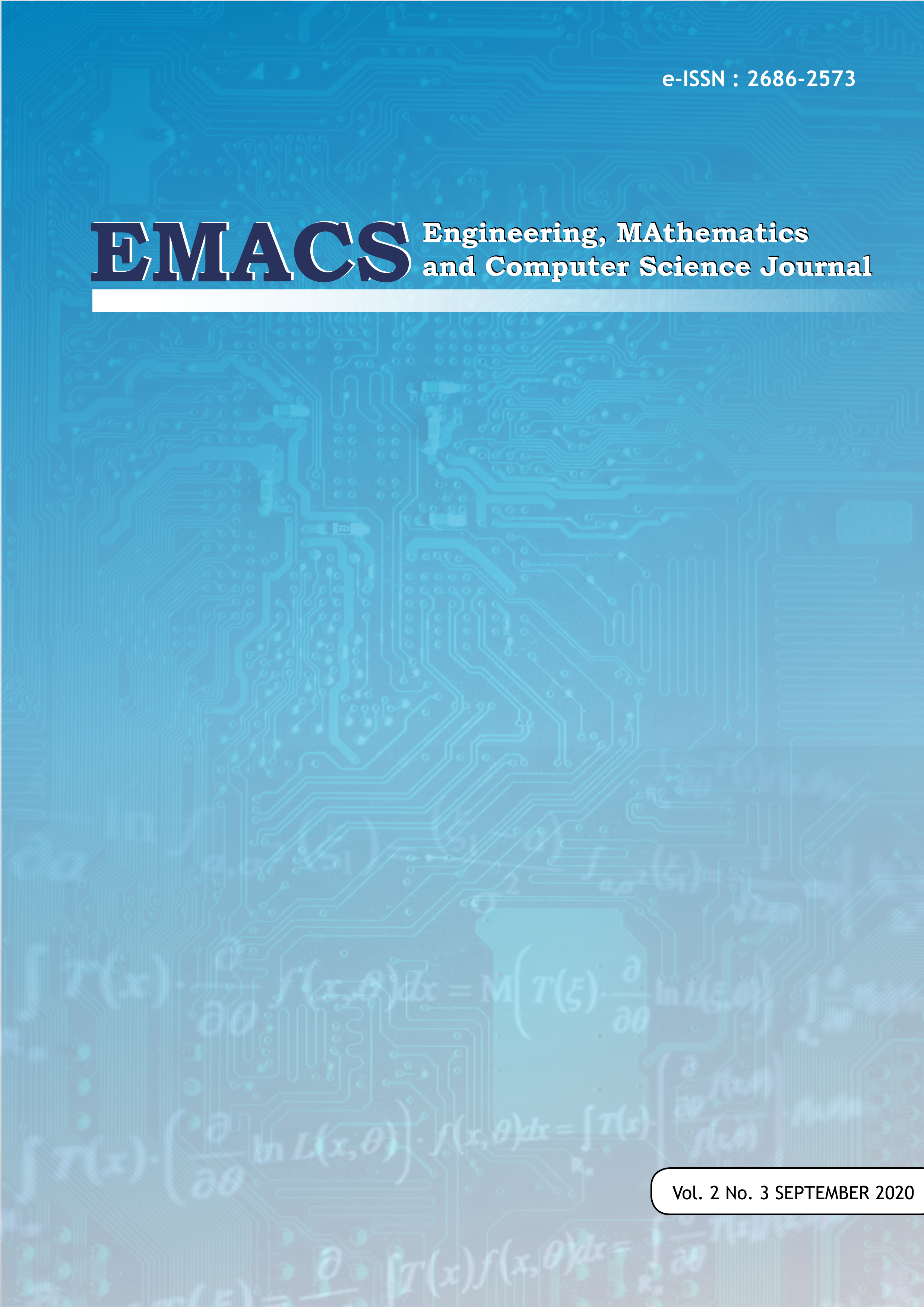The Application of Chatbot for Customer Service in E-Commerce
DOI:
https://doi.org/10.21512/emacsjournal.v2i3.6531Keywords:
Chatbot, Self-learning, Deep learning, NLP, customer serviceAbstract
The use of intelligent machines such as chatbot have been increasing each day. The main idea that we wanted to address in our paper is that with the capabilities that intelligent machines have it will be able to replace humans in doing a certain task and be able to bring better advantages in the long run. The focus of this study is that we are able to manipulate the ability of chatbot to impersonate how humans interact with each other and will enable it to play a role as to handle the customer service in e-commerce websites or applications which will be an alternative to replace the traditional customer serviceReferences
Aggarwal , V., Jain, A., Khatter, H., & Gupta, K. (2019). Evolution of Chatbots for Smart Assistance. International Journal of Innovative Technology and Exploring Engineering, pp. 77-83.
Asadi, A.-r., & Hemadi, R. (2018). Design and Implementation of a chatbot for e-commerce. Information Communication Technology and Doing Business, pp. 1-10.
Coperich, K., Cudney, E., & Nembhard, H. (2017). Continuous improvement study of chatbot technologies using a human factors methodology. In Proceedings of the 2017 Industrial and Systems Engineering Conference.
Dahiya, M. (2017). A Tool of Conversation: Chatbot. International Journal of Computer Sciences and Engineering (JCSE). pp. 1-4
Elsholz, E., Chamberlain, J., & Kruschwitz, U. (2019). Exploring Language Style in Chatbots to Increase Perceived Product Value and User Engagement. Conference on Human Information Interaction and Retrieval, pp. 301-305.
Florian Johannsen, S. L. (2018). Comparison of Commercial Chatbot Solution for Supporting Customer Interaction. Association for Information Systems,pp. 937-947.
Haan, H. d. (2018). Chatbot Personality and Customer Satisfaction. Utrecht University, pp. 1-40.
Jwala, K., Sirisha, G., & Padma Raju, G. (2019). Developing a Chatbot using Machine Learning. International Journal of Recent Technology and Engineering, pp. 89-92.
Khan , R. (2017). Standardized Architecture for Conversational Agents a.k.a. ChatBots. International Journal of Computer Trends and Technology, pp. 114-121.
Lei Cui, S. H. (2017). SuperAgent: A Customer Service Chatbot for E-commerce Websites. Association for Computational Linguistics, pp. 97-102.
McGrath, R. (Author). (2018, 3 May). How To Improve Customer Service With Chatbot. Retrieved June 15th 2020 from https://chatbotsmagazine.com/ill-never-buy-from-them-again-using-chatbots-to-avoid-bad-customer-service-e6a967360244
Nuruzzaman, Mohammad & Hussain, Omar. (2018). A Survey on Chatbot Implementation in Customer Service Industry through Deep Neural Networks. 10.1109/ICEBE.2018.00019. pp. 54-61.
Parasuraman, A., Berry, L. L., & Zeithaml, V. A. (1991). Understanding customer expectations of service. Sloan management review, 32(3), 39-48.
Rahman, A. M., Al Mamun, A., & Islam, A. (2017). Programming challenges of chatbot: Current and future prospective. In 2017 IEEE Region 10 Humanitarian Technology Conference (R10-HTC) (pp. 75-78).
Sameera A. Abdul-Kader, D. J. (2015). Survey on Chatbot Design Techniques in Speech Conversation Systems. (IJACSA) International Journal of Advanced Computer Science and Applications, pp. 72-80.
Schmidt, R. (2018). Learning System Customer Service Chatbot. Georgia Institute of Technology, pp. 1-5.
Siddharth Gupta, D. B. (2015). An E-Commerce Website based Chatbot. International Journal of Computer Science and Information Technologies (IJCSIT), 6, pp. 1483-1485.
Weizenbaum, J. (1966). ELIZA: A Computer Program for The Study of Natural Language Communication between Man and Machine. Commun.ACM, p. 36-45.
Xu, A., Liu, Z., Guo, Y., Sinha, V., & Akkiraju, R. (2017). A New Chatbot for Customer Service on Social Media. Proceedings of the 2017 CHI Conference on Human Factors in Computing Systems at New York, USA, pp. 3506-3510.
Xueming Luo, S. T. (2019). Machines vs. Humans: The Impact of Artificial. Institute for Operations Research and the Management Sciences (INFORMS), pp. 1-12.
Zhu, P., Zhang, Z., Li, J., Huang, Y., & Zhao, H. (2018). Lingke: A Fine-grained Multi-turn Chatbot for Customer Service. Proceedings of the 27th International Conference on Computational Linguistics: System Demonstrations, At Santa Fe, New Mexico, pp. 108-112.
Zumstein, D., & Hundertmark, S. (2017). Chatbots - An Interactive Technology for Personalized Communication, Transaction and Services. IADIS International Journal, pp. 96-109.
Downloads
Published
How to Cite
Issue
Section
License
Copyright (c) 2020 Engineering, MAthematics and Computer Science (EMACS) Journal

This work is licensed under a Creative Commons Attribution-ShareAlike 4.0 International License.
Authors who publish with this journal agree to the following terms:
- Authors retain copyright and grant the journal right of first publication with the work simultaneously licensed under a Creative Commons Attribution License - Share Alike that allows others to share the work with an acknowledgment of the work's authorship and initial publication in this journal.
- Authors are able to enter into separate, additional contractual arrangements for the non-exclusive distribution of the journal's published version of the work (e.g., post it to an institutional repository or publish it in a book), with an acknowledgment of its initial publication in this journal.
- Authors are permitted and encouraged to post their work online (e.g., in institutional repositories or on their website) prior to and during the submission process, as it can lead to productive exchanges, as well as earlier and greater citation of published work.
USER RIGHTS
All articles published Open Access will be immediately and permanently free for everyone to read and download. We are continuously working with our author communities to select the best choice of license options, currently being defined for this journal as follows: Creative Commons Attribution-Share Alike (CC BY-SA)





